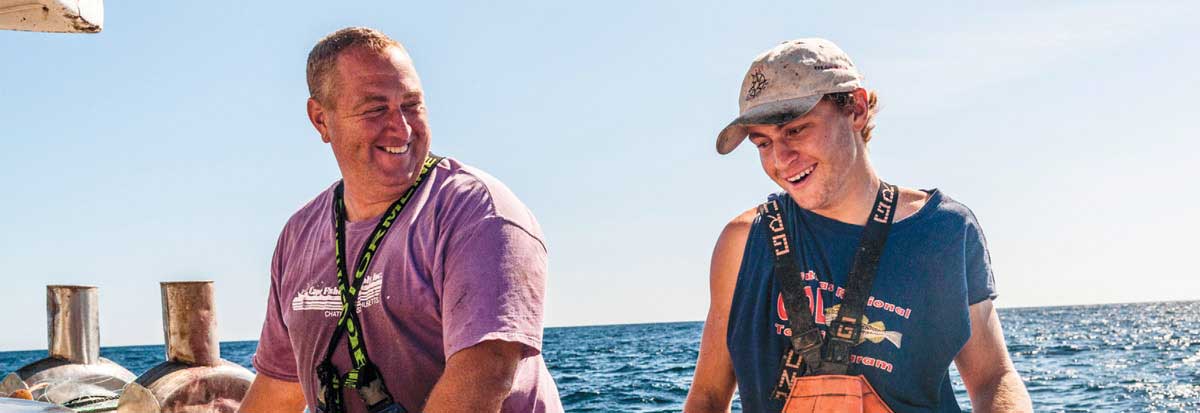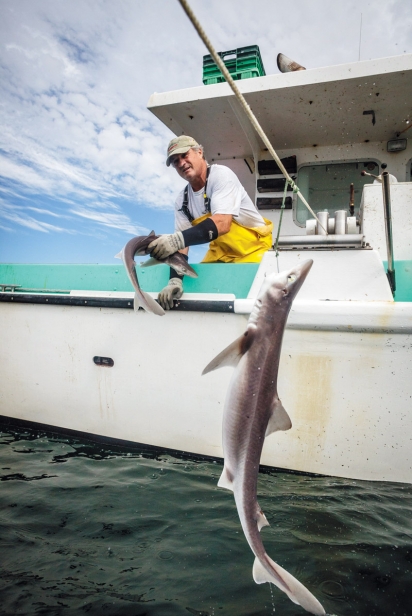A Local Catch
If you are a fisherman out on Georges Bank or in Cape Cod Bay or Nantucket Sound for hours or days at a time, you might just come up with some ideas. Ideas about how to sell the fish you are catching even if it’s something people back on shore have never tried. Ideas that had better be good because the fish themselves are a bit peculiar looking or have a burdensome name.
This is precisely how Pier to Plate, the newest program from the Cape Cod Commercial Fishermen’s Alliance, came to be. The Fishermen’s Alliance has, since it was founded more than 25 years ago, been at the forefront of advocating for the small-boat fishing fleet on Cape Cod. Nationally recognized as a nonprofit aligning the protection of the ocean with the economic interests of the historic Cape Cod fishing industry, the Fishermen’s Alliance has effected change via public policy work, collaborations with marine scientists, community partnerships and educational outreach. Always taking its lead from the innovations of the fishermen themselves, in recent years the organization has turned its efforts toward marketing the “underloved” species that fishermen catch in abundance in local waters.
Thus, when some of the fishermen suggested giving the fish away, Communications Director Nancy Civetta sat up and listened. Civetta runs the organization’s Seafood Marketing Committee, a group of fishermen who meet monthly to discuss and strategize ways to promote lesser-known species, such as skate, monkfish and dogfish, also called Cape shark.
“Tim Linnell, one of Chatham’s gillnet fishermen, wondered if the best way to get local restaurants to start serving dogfish and skate might be if we donated it to them…that way they weren’t out any investment, but they would be encouraged to start experimenting with these local fish and putting them on the menu, right here on Cape Cod,” says Civetta. “So we began to look for ways to make it happen.”
Skate and dogfish are both abundant and sustainably-managed fisheries, caught in great numbers by the local fleet. (Last year, Chatham boats alone landed 11 million pounds of dogfish.) Neither is very well known, or even available, in domestic fish markets or restaurants. You might find skate on some menus in urban centers or in specialty fish stores, but it is rarely seen at Cape Cod restaurants. Dogfish is simply unheard of in America as a dining choice. Nearly all of the dogfish caught by Massachusetts fishermen annually is exported to Europe and Asia. As a result, the market is stagnant, and the price to the boat remains low.
“It is now nearly 100 percent of my business,” says Tim Linnell, the fisherman who helped inspire the Pier to Plate concept. “We couldn’t catch enough groundfish so we had to switch to the skates and the dogfish.” He is referencing the decline in cod and haddock that has sent the Commonwealth’s fishing industry reeling in recent years. After stock assessments indicated that the cod population was at just six percent of its historic numbers, NOAA regulators slashed fishermen’s quota by up to 77 percent. This left many fishermen scrambling for other species to land—and for places to sell them.
Once Civetta had the directive from the fishermen to launch a program to distribute and promote dogfish and skate here at home, the Fishermen’s Alliance submitted a proposal and was awarded a federal Saltonstall-Kennedy grant to provide close to 10,000 pounds to 20 eateries and fish stores on Cape Cod. Pier to Plate, which kicked off on Memorial Day, works closely with chefs and restaurant managers to share stories of the fishermen, educate their kitchen and waitstaff about the fish species, and to promote fish tasting special events throughout the summer.
Both dogfish and skate are cartilaginous fish, meaning they have cartilage instead of bones. Dogfish, a small shark, has firm, lean white flesh regularly used overseas for fish and chips. Only the wings of the ray-like skate are eaten, and chefs often create pan-seared presentations of this mild-flavored, fanshaped fish. Excellent sources of low-fat protein, dogfish and skate are healthy and tasty choices for American consumers, if they can find them.
“I think the local restaurants need to put local fish on their menus,” says Linnell. “Over the summer, millions of people come to Cape Cod, and then they return home across the country and the world, so hopefully that spreads the word.”
In addition to providing the fish, one of Pier to Plate’s goals is to help get a terrific narrative about locally-caught seafood out to the public. Earlier this year, one of the program’s partners, Chatham Fish and Lobster Co., who is doing the work of distributing the fish to the participating restaurants, hosted a dogfish tasting at their Route 28 location in Chatham. Linnell, who grew up helping his father shellfish and whose brother and two sons are also fishermen, was on hand to greet the customers and talk about the fishery.
“It was a great tasting,” he says. “They did a battered fried dogfish and it went really well. And people liked the story about where it comes from. They like the hands-on, local deal.”
Ultimately, the seafood lovers of Cape Cod have the chance to positively affect the small-boat fishing industry here, and the marine environment as well. Dogfish and skate are overly abundant predatory species, which, if not adequately harvested, could compromise the ecosystem balance. And since they are what the boats are landing on Cape Cod, building consumer interest helps everyone.
“When demand goes up, the price goes up and my bottom line goes up,” says Linnell. This could mean the next generation of his family can keep on fishing.
In the meantime, Civetta hopes that Pier to Plate will inspire people to embrace these unfamiliar fish. “By ordering dogfish and skate dishes, we will be supporting Cape Cod fishermen and creating a new local fish movement,” she says. Everyone can agree that is a great idea.






